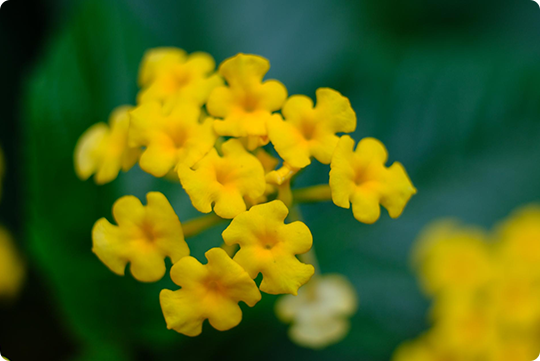
Invasive Alien Plants Species (IAPS) refer to such plant species that have been introduced to Indian soil, intentionally or accidentally, and which now proliferate on such a scale that they are harmful to humans, ecology and/or economy.
Lantana camara, Hyptis Saubeolens (Van Tulsi), Parthenium hysterophorus, Prosopis juliflora and Eichhornia crassipes (water hyacinth) are some of the invasive alien plant species we see in India. These plants are poisonous for herbivores and humans and degrade soil and water quality.

What's the problem with Lantana camara?
Most of us admire the flowers of Lantana camara but do not yet recognise it as an invasive plant. But the plant species occupies 43-44% of Indian forests, according to reports published in 2020 by scientists of Wildlife Institute of India, based on data from 2008-09. That’s an area bigger than countries like Iraq and Germany. The mature plants produce up to 12,000 seeds annually and the seeds remain viable for almost 11 years.
Why are we bothered about Lantana camara?
Impenetrable thickets of Lantana camara only give an illusion of green cover in Indian forests. In reality, they cause major loss of grass cover. They bring about almost a two-fold decline in proliferation of native species of trees. They also lead to loss of food resources for herbivores of the region. Ingestion of Lantana by grazing animals can lead to liver damage in them. Hence, the proliferation of this species leads to multilevel loss of biodiversity in forests. We need to uproot these plants in order to encourage the growth of local trees, which in turn enrich cattle health and wildlife diversity in the region.
Lantana can be used as a coal-substitute for fuel and as a component in wood polymer composite. Replacing this plant with native vegetation can fetch high carbon credits and increase the grass cover to generate more fodder for herbivores.
What have we done to deal with Lantana camara?
In order to remove the plant from our land, we used the cut rootstock method as suggested by Dr C R Babu. We got special tools designed by Junglescapes. With the help of local people, we cleared the Lantana infested patches. We have been monitoring the patches over the seasons. The branches have been used to make fences along the property. We have also shredded the branches, which are being converted to soil by the termite.
What are our observations after Lantana removal?
Saplings of local trees were found near or under Lantana thickets. After Lantana was removed, the saplings which were stagnant perhaps for years, started growing without any human intervention. Some trees have yielded more fruits than in the previous year. Leaves of these trees were found to be slightly broader than leaves of trees surrounded by Lantana camara. On disturbed soil, some invasive plants started re-growing.